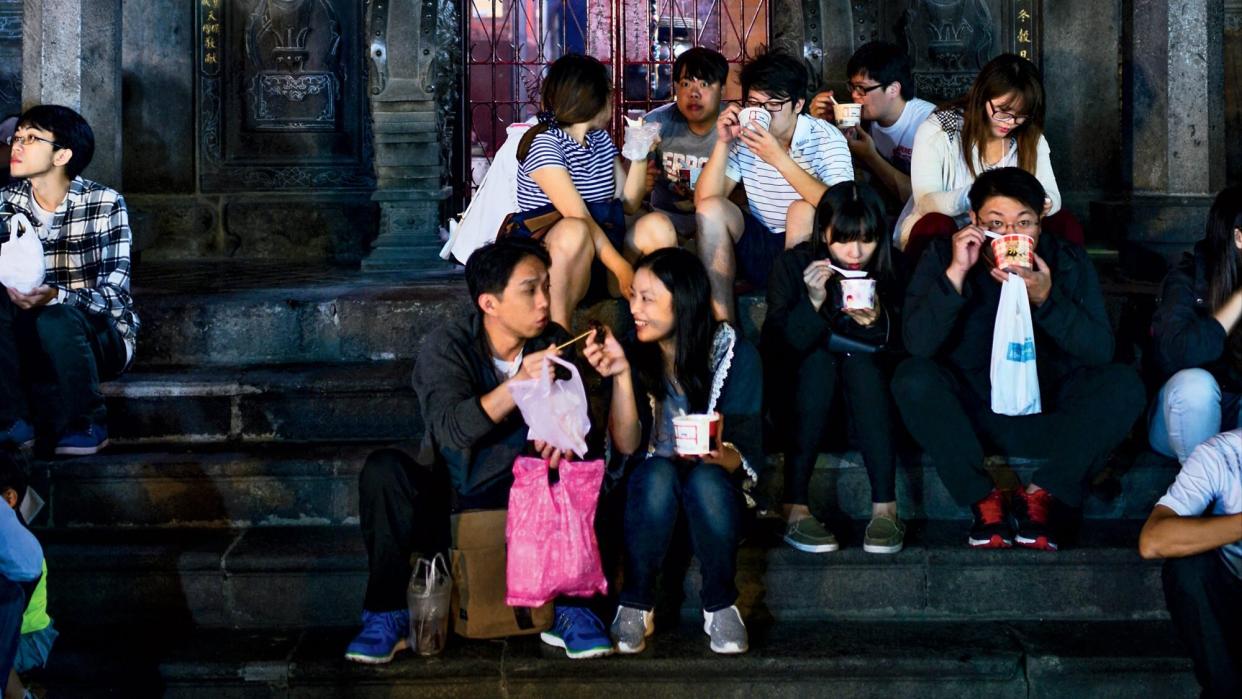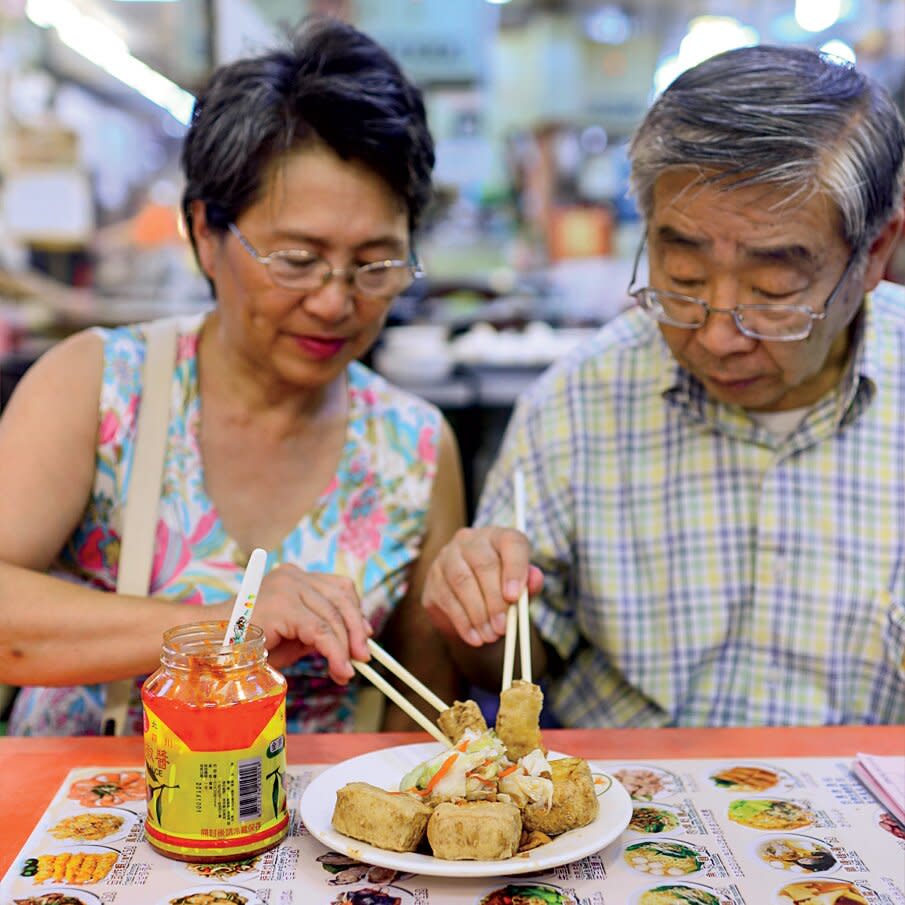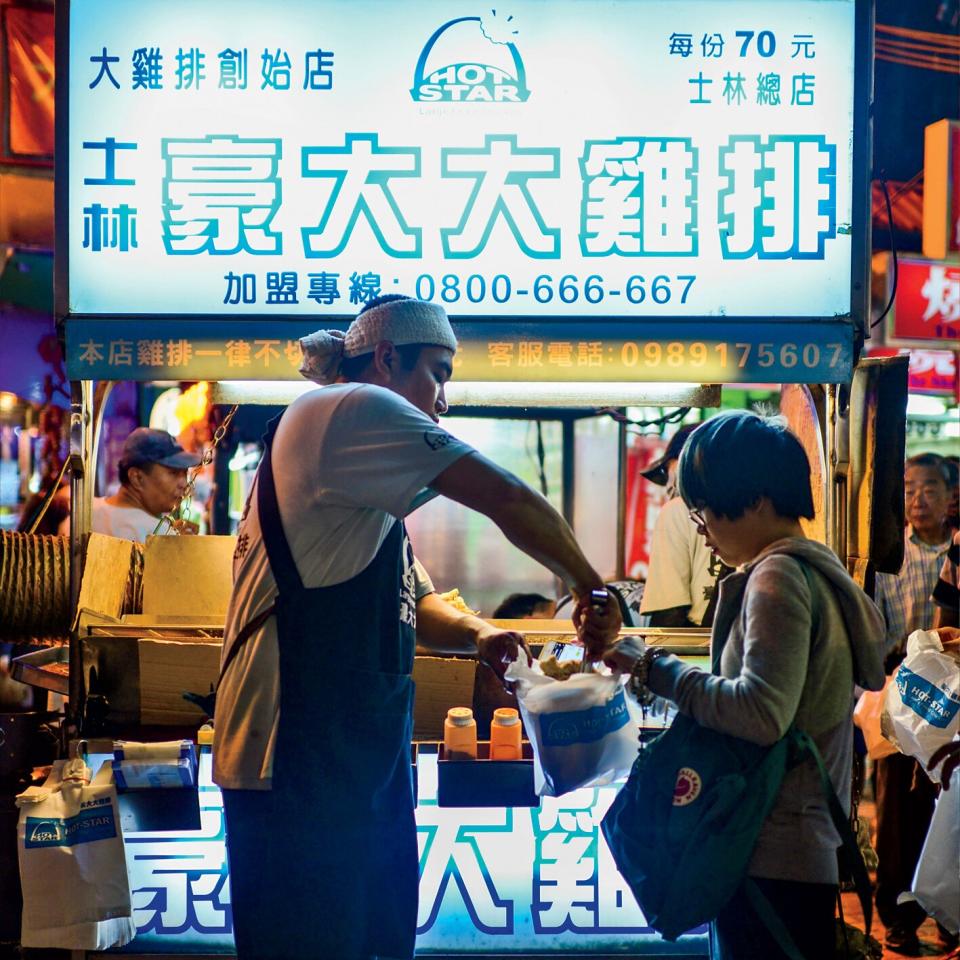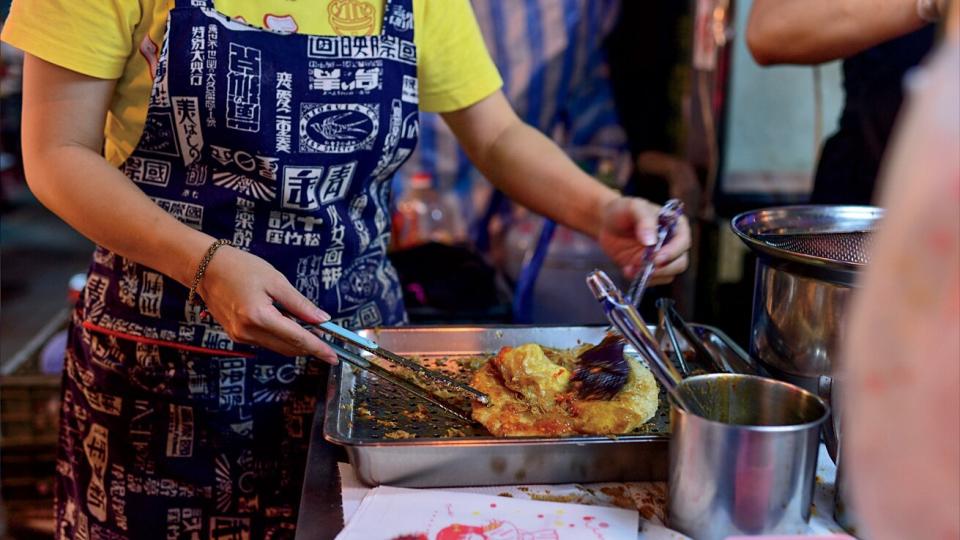World's Best $3.50 Meals

? Bonjwing Lee
My parents have two rice cookers at their home in Kansas City, Missouri. My father, who grew up very poor, likes his long-grain rice superdry, the way he ate it as a boy. His family arrived in Taiwan as refugees from Shanghai during the Communist takeover of mainland China. As the eldest child, he had to sell lottery tickets on the street to make money when his father became terminally ill. He also shouldered many of the household responsibilities, like cooking. The almost-crunchy rice he learned to make was less likely to spoil in Taipei's hot, humid weather.
I prefer my mother's rice. Her father had worked for the postmaster general of China, and he continued to work for the postal service in Taipei after the family fled the mainland. My mother's family could afford the stickier, sweeter short-grain variety of rice. Compared to my father's, I think it offers a more comforting backdrop for the flavorful sauces of Chinese home cooking, like the red-braised meats my mother favored for their one-pot simplicity.
My parents met in college in Taipei. Despite the socioeconomic gap that still separates them in the kitchen today, like many students they bridged their differences at the city's street stalls and the outdoor night markets. There, where everything was and still is hot and cheap and often good, my father courted my mother over late-night noodles and simmering pots of stinky tofu. On childhood visits to my parents' homeland, my siblings and I, all born and raised in the Midwest, would pinch our noses as we passed those carts, bewildered by the appeal.

? Bonjwing Lee
In the 28 years since my family's last trip to Taiwan, I, like my father, entered the practice of law. But, unlike him, I've had the luxury of leaving it. Inspired by my childhood travels, which were fueled by my mother's 22-year career with TWA (the now-defunct airline once based in Kansas City), I unchained myself from the desk and traded the generous paychecks for adventure. I now explore the world as a freelance writer and photographer, eating omnivorously at restaurants high and low for my blog, The Ulterior Epicure.
With a trove of frequent-flier miles and a growing sense of filial duty, I recently took my mom and dad to Taiwan for a long-overdue homecoming. I also wanted to experience for myself the sights, smells and tastes that had become distant for all of us.
Like the sprawling metropolis that Taipei has become, Shilin Night Market, where my parents dated 50 years ago, had outgrown their memories of it. "I don't recognize any of this," my mother said, gasping, as we waded into the crowd. What had been a quiet two-block stretch of 25, maybe 30 street vendors in their college days has since ballooned into Taipei's largest and most famous nighttime destination. Now it's a labyrinth of alleyways several blocks squared, choked with hundreds of carts and stalls selling everything from smartphone covers to grilled squid.
In an effort to alleviate the congestion on the street, Taipei opened an underground food court in 2011. Most locals dismiss it as a tourist trap. On both my visits to the food court it was relatively empty, while the street markets were flooded with people.
Night markets aren't simply a place for a quick dinner on the go. They serve as a public meeting space, where friends and families socialize. Most markets are open every day of the week from sundown until past midnight, providing an inexpensive escape from the cramped quarters of Taipei's urban life. So, although you'll find plenty of food there, you'll also find plenty of everything else. They're almost like nightly carnivals, with trinket stands and game stalls.

? Bonjwing Lee
The Taiwanese are practical eaters. They don't mind standing or squatting, or taking their food to go. But they won't spend very much on it, either. Due to a low cost of living and lots of competition, food in Taiwan is shockingly cheap. For $3.50, one can eat very well on the streets. And that's partly because the Taiwanese are discriminating eaters, too, unafraid to vote with their wallets. They like their food hot and flavorful, and they're willing to wait for it when they find it.
At Shilin, the longest line was at the famous Hot-Star chicken stand. One of the few street vendors I saw that had cordoned off a wraparound line to manage the traffic, Hot-Star sells chicken cutlets the size of small dinner plates for about $1.70 a serving. The cutlets are pounded thin, breaded, fried like schnitzel and dusted with a heavy coating of spices. Due to the steady stream of customers, the chicken is always hot out of the fryer. The meat is tender, the breading satisfyingly crunchy.

? Bonjwing Lee
Across town at Raohe St. Night Market, my friend I-Shan Wang, a cook at a terrific local restaurant, Mume, led me to the end of a snaking line near one of the main gates. Here we waited for fist-size buns filled with ground pork heavily spiked with black pepper. Baked in tandoor-like ovens, these hu jiao bing were golden brown on the outside, the dough soft and still steaming on the inside. They were so hot we could barely hold them in their paper sacks as we shuffled through the crowd looking for a spot to stand and eat.
You'll find the same roster of street food at most night markets: roasted corn on the cob with meaty kernels glazed with sweet soy sauce; steamed buns; and soup noodles, with every meat and off-cut imaginable. There are also freshly squeezed fruit juices, such as watermelon and papaya, and, of course, mounds of Taiwanese shaved ice under an avalanche of toppings, including a rainbow of fruits, a variety of beans and—my favorite—a bitter jelly made from herbs. Particularly popular at the moment are shaved frozen mangoes doused with a sweet mango cream.

? Bonjwing Lee
My parents were amused by the newfangled novelties they discovered at the night markets, such as a hot dog–like creation called "large intestine wrapped around small intestine." (How's that for practical?) This was a sweet Chinese sausage nestled in a larger, rice-filled casing spliced lengthwise like a bun. There was even an oddly delicious burrito-style dessert filled with guava and pineapple sorbets, plus red bean ice cream, cilantro and peanut brittle.
But, like me, they gravitated toward the traditional foods, including o ah jian, an oyster omelet, slightly viscous with a sweet-potato-starch slurry that keeps the oysters tender. I even came to appreciate stinky tofu, the smell of which didn't seem so stinky anymore as I ate with my parents amid the chaos of their youth, happy and home.